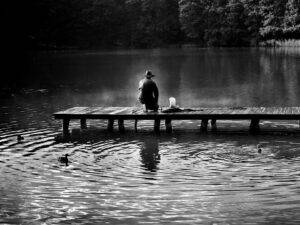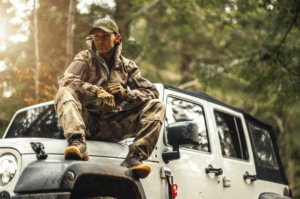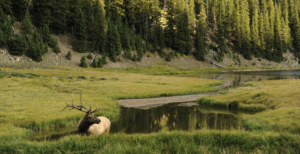

Spending time outdoors may be fun, but as an outdoor enthusiast, you know that it’s also risky. Miles from civilization, you can suffer a life-threatening injury. A sudden rainstorm or snowstorm can leave you lost or stranded. Or, your tent pole can break, leaving you at the mercy of the elements. During such emergencies, it’s your safety equipment that patches up your wounds, keeps you warm and dry, or repairs your shelter. But that is assuming that you remembered to pack such equipment, to begin with.
So, on your next trip, don’t leave the following items behind.
LED Lamps
When you have to spend the night outdoors because you choose to do so or because you get lost, lamps come in handy. And the best of them have LED bulbs. Not only are they bright and energy efficient, but they are also light, compact and rechargeable. Now, when deciding on which lamps to carry, always include a lantern, which is perfect for lighting a tent. Also, remember to pick a flashlight to help you find your way around at night or to signal for help. And finally, get a headlamp. Unlike the flashlight, which you hold with one hand, headlamps leave you free to use both hands.
First-Aid Kit
When you’re outdoors, a medical emergency is never far away. You could be climbing a hill or rock face one minute only to slip and injure yourself in the next. In such cases, a first-aid kit becomes a lifesaver. So carry one. But resist the urge to assemble it yourself, lest you overlook an important item. Instead, buy a pre-assembled kit, whose size and content depends on how much, how long, and where you intend to use it. For instance, kits used in watersports have a waterproof cover, and those used in mountaineering, a rugged cover. But if you’re really a do-it-yourselfer, you can make homemade penicillin.
Navigation Tools
When hiking in a remote area, getting lost is a possibility. So carry some navigation tools with you, starting with a detailed topographical map. It should clearly show every road, footpath, and nature trail in the area. And since you need to locate your position on the map, bring along a GPS device and an altimeter. One pinpoints your location and the other, your elevation. But remember, these two devices rely on batteries. So as a precaution, pack a traditional compass as well. And if possible, make sure it has a mirror with which to signal planes during an emergency. Or better still, forgo the mirror and carry a personal locator beacon.
Personal Weather Station
When you’re outdoors, a sudden change in the weather often catches you off guard. And despite being an experienced climber or hiker, the change can leave you stranded, without a shelter or supplies. So as a precaution, know the weather conditions before leaving for your great outdoor adventure. The question is how. Like most people, you can choose to get your weather reports from the TV or the internet. But if you’re the adventurous type, you can choose to assemble your own weather station in your backyard. And from it, you get your reports firsthand. Fortunately, you don’t need much to get the station started. Start by reading home weather station reviews. And armed with the information you glean from them, pick the best meteorological devices. Then set them up as recommended.
Emergency Shelter
Your tent may be your primary shelter. But you rarely carry with you at all times. In fact, most of the time, you leave it behind at the camping site. So if you get injured or stranded far from the site, you have nothing to shelter you from the elements. That’s why you should always carry an emergency shelter with you at all times. And it doesn’t have to be large, heavy, or even tent-like. A thin tarp, space blanket, or trash bag suffices because it keeps you dry until help arrives.
Sun Protection
During the summer months, the glare and heat of the sun are an inescapable part of hiking or camping. And if you fail to protect yourself from them, the glare strains your eyes while the heat burns any exposed skin. Worse still, the ultraviolet radiation accompanying them can cause skin cancer. For this reason, always pack some sun protection, including sunglasses for your eyes and sunscreen lotion for your skin. And both should have a sun protection factor of 15 to 30 and the ability to block both UVA and UVB radiation. But if you prefer not to slather your skin with sunscreen lotion, consider packing some sun-protection clothing. These are just as effective. However, as they leave some areas of your skin exposed, you will still need some sunscreen, though not much.

Repair Kit
Tent poles break, tents tear, and gas stoves break down. And when they do, most adventurers lack the one thing they need to fix the pole, tent, or stove – a repair kit. So they end up sleeping out in the cold or eating a cold meal. This doesn’t have to be your fate. Before setting off for your next adventure, assemble a repair kit that contains a multi-tool, duct tape, and a tent pole sleeve. Also throw in a stretch cord, a nylon cord, cord locks, and cord buckles. And don’t stop there. Also include small items like a sewing kit, mattress repair kit, and a stove repair kit.
Fire-Starting Equipment
In case of an emergency, fire provides warmth, light, and protection from wild animals. It even signals for help. But, lighting one is harder than you think, even during dry conditions, which is why you need fire-starting equipment. The most common fire starter is, of course, a box of matches. Unfortunately, matchboxes are flimsy and susceptible to water, rendering them useless in the wild. So in their place, carry butane lighters. And for tinder, bring along wood chips soaked in resin, dry pieces of wood, or even household lint. Only remember to seal them in a plastic bag to keep them dry. Or simply have a portable gas stove with you on trips to rocky or sparsely wooded areas.
Before leaving for any trip, guarantee your safety by carrying the right equipment. Have LED lamps, navigation tools, and a portable weather station. Also, remember to pack sun protection and fire starting equipment. And while you’re at it, throw in a first-aid kit, a repair kit, and an emergency shelter.







